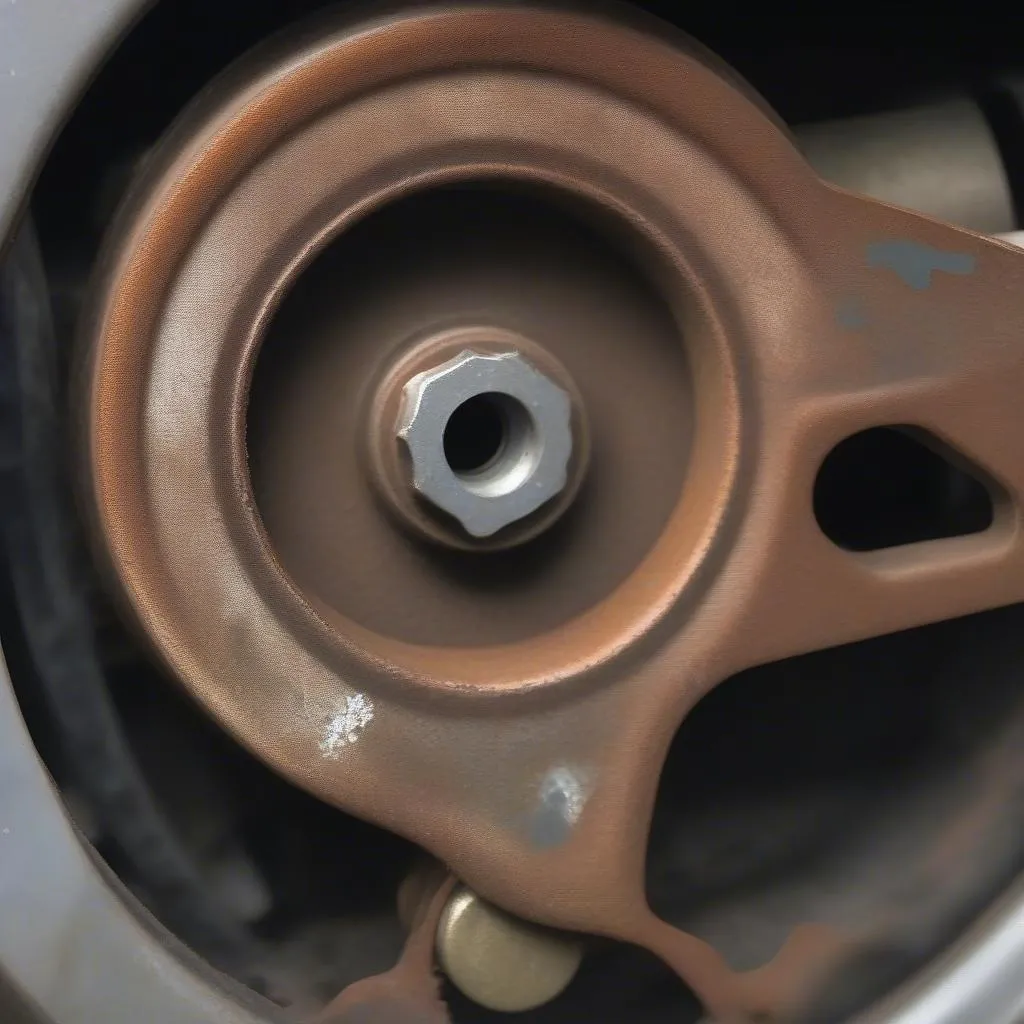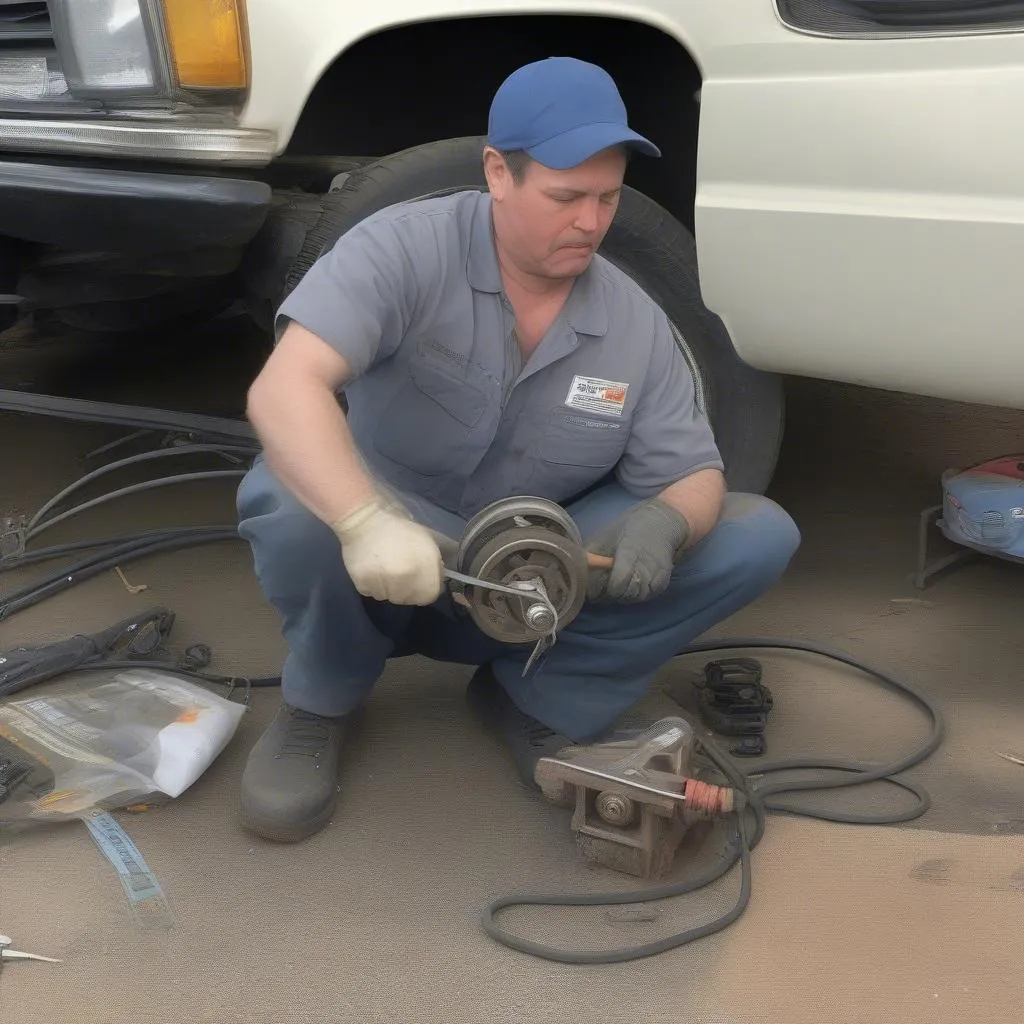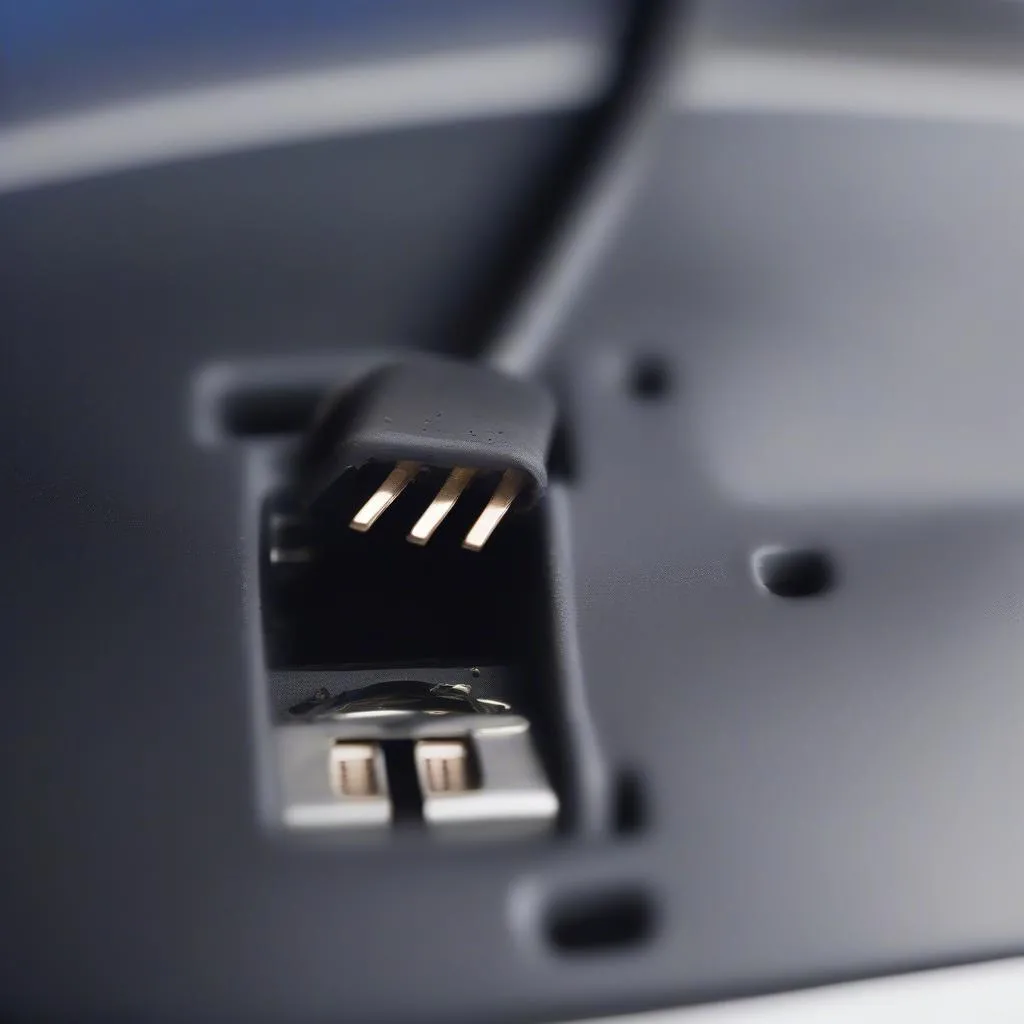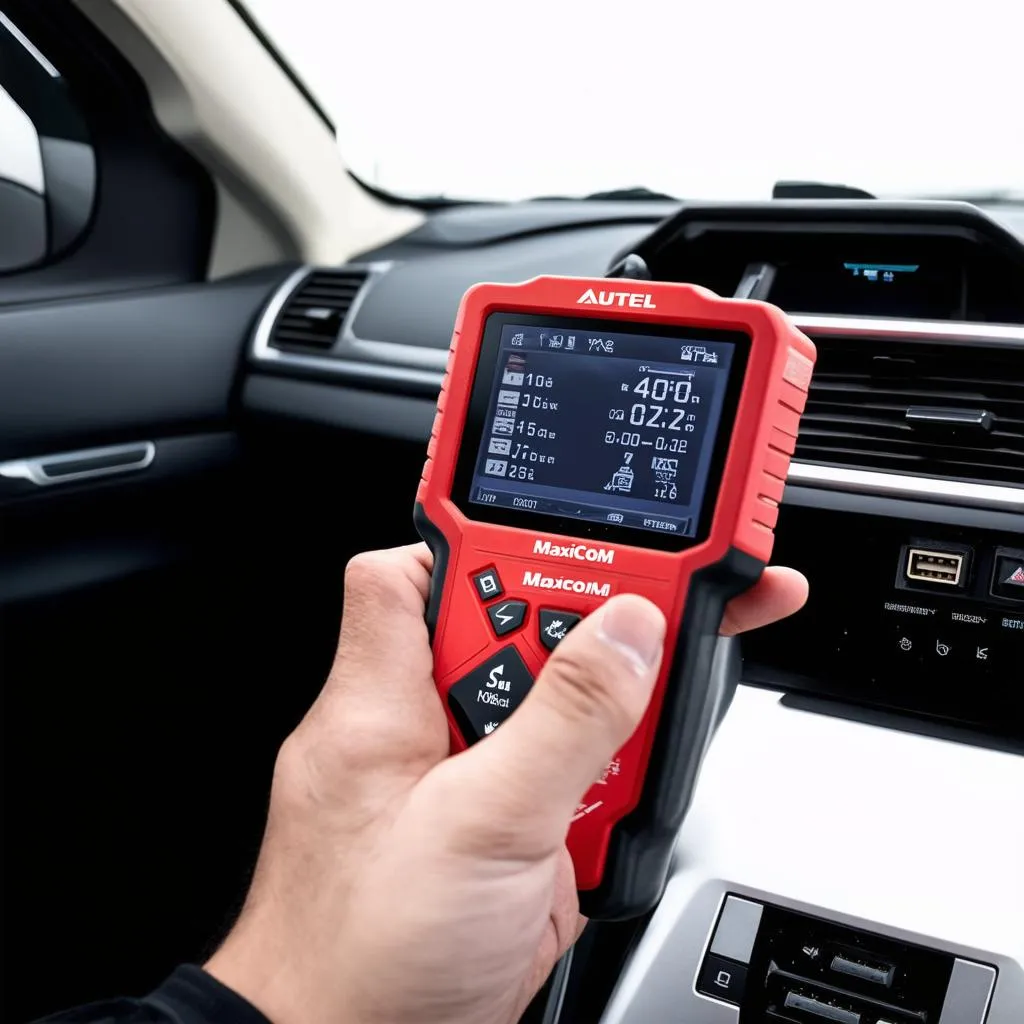A seized AC pulley is a common problem in older Mercedes vehicles, especially the 1999 models notorious for rust issues. This issue can lead to a malfunctioning AC system and potentially damage other engine components. This article will guide you on how to diagnose, troubleshoot, and fix a seized AC pulley on your 1999 Mercedes, particularly focusing on rust-related causes.
Understanding the Problem
A seized AC pulley occurs when the bearing inside the pulley seizes up, preventing the pulley from rotating. This can happen due to a few reasons:
- Rust and Corrosion: This is the most common culprit, especially in humid climates or areas that use road salt. Rust can build up on the pulley’s bearing surface, hindering its movement.
- Lack of Lubrication: The bearing inside the pulley requires lubrication to function correctly. Over time, the grease can dry out or leak, leading to increased friction and eventual seizure.
- Worn-out Bearing: Like any mechanical component, the bearing has a lifespan. With time and mileage, it can wear out, leading to increased friction and eventual seizure.
Recognizing a Seized AC Pulley
Here are some tell-tale signs of a seized AC pulley:
- Squealing or Screeching Noise: A loud, high-pitched squealing or screeching noise coming from under the hood, especially when you start your car or turn on the AC, often indicates a seized pulley.
- Overheating Engine: A seized pulley puts extra strain on the engine, potentially leading to overheating.
- AC Not Working: If your AC isn’t blowing cold air, a seized AC pulley might be the reason.
Gathering the Necessary Tools and Parts
Before starting the repair, gather the following tools and parts:
- Socket Wrench Set
- Open-End Wrenches
- Screwdrivers
- New AC Pulley
- Belt Tensioner Tool (if applicable)
- Penetrating Oil
- Rust Remover
- Shop Rags
- Safety Glasses
- Gloves
Fixing the Seized AC Pulley
Here’s a step-by-step guide on how to fix the seized AC pulley:
-
Locate the AC Pulley: Open the hood and locate the AC compressor, usually mounted on the front of the engine. The AC pulley is attached to the compressor.
-
Remove the Drive Belt: Loosen the tension on the serpentine belt using the appropriate tool for your Mercedes model. Once the belt is loose, carefully remove it from the AC pulley.
-
Inspect the Pulley: With the belt removed, try to spin the pulley by hand. If it doesn’t spin freely or makes a grinding noise, it’s seized and needs replacement.
-
Remove the Seized Pulley: Use a socket wrench to remove the bolt holding the pulley in place. If the pulley is stubborn due to rust, apply a generous amount of penetrating oil and allow it to sit for a few minutes before attempting to remove it.
-
Clean the Mounting Surface: Using a wire brush and rust remover, thoroughly clean the mounting surface where the pulley sits. This will ensure a proper fit for the new pulley.
-
Install the New Pulley: Align the new pulley with the mounting surface and thread the bolt by hand. Tighten the bolt using a socket wrench, but avoid overtightening.
-
Reinstall the Drive Belt: Carefully route the serpentine belt back onto all the pulleys, ensuring it’s properly seated. Use the belt tensioner tool to apply the correct tension and tighten the belt.
-
Start the Engine: Start the engine and check if the AC system is functioning correctly. Also, listen for any unusual noises that might indicate a problem.
Frequently Asked Questions
Q: Can I drive with a seized AC pulley?
A: It is not recommended to drive with a seized AC pulley as it can cause further damage to your engine and other components.
Q: How much does it cost to replace a seized AC pulley?
A: The cost of replacing a seized AC pulley can vary depending on the make and model of your vehicle, as well as labor costs. However, it’s generally a relatively affordable repair.
Q: Can I use a lubricant to free up a seized pulley?
A: While some lubricants might temporarily free a seized pulley, it’s not a permanent solution. Replacing the pulley is recommended to avoid future problems.
Q: Can Cardiagtech’s diagnostic tools help me identify a seized AC pulley?
A: While CARDIAGTECH specializes in advanced diagnostic tools for various car systems, a seized AC pulley is typically diagnosed through visual inspection and the noises it produces.
 Seized AC Pulley
Seized AC Pulley
 AC Pulley Replacement
AC Pulley Replacement
Conclusion
Addressing a seized AC pulley promptly is crucial to prevent further damage to your 1999 Mercedes. By following the steps outlined in this guide, you can successfully diagnose and fix the issue. However, if you’re uncomfortable working on your vehicle, it’s always best to consult a qualified mechanic. Remember, regular maintenance and inspections can help prevent such problems and keep your Mercedes running smoothly for years to come.


